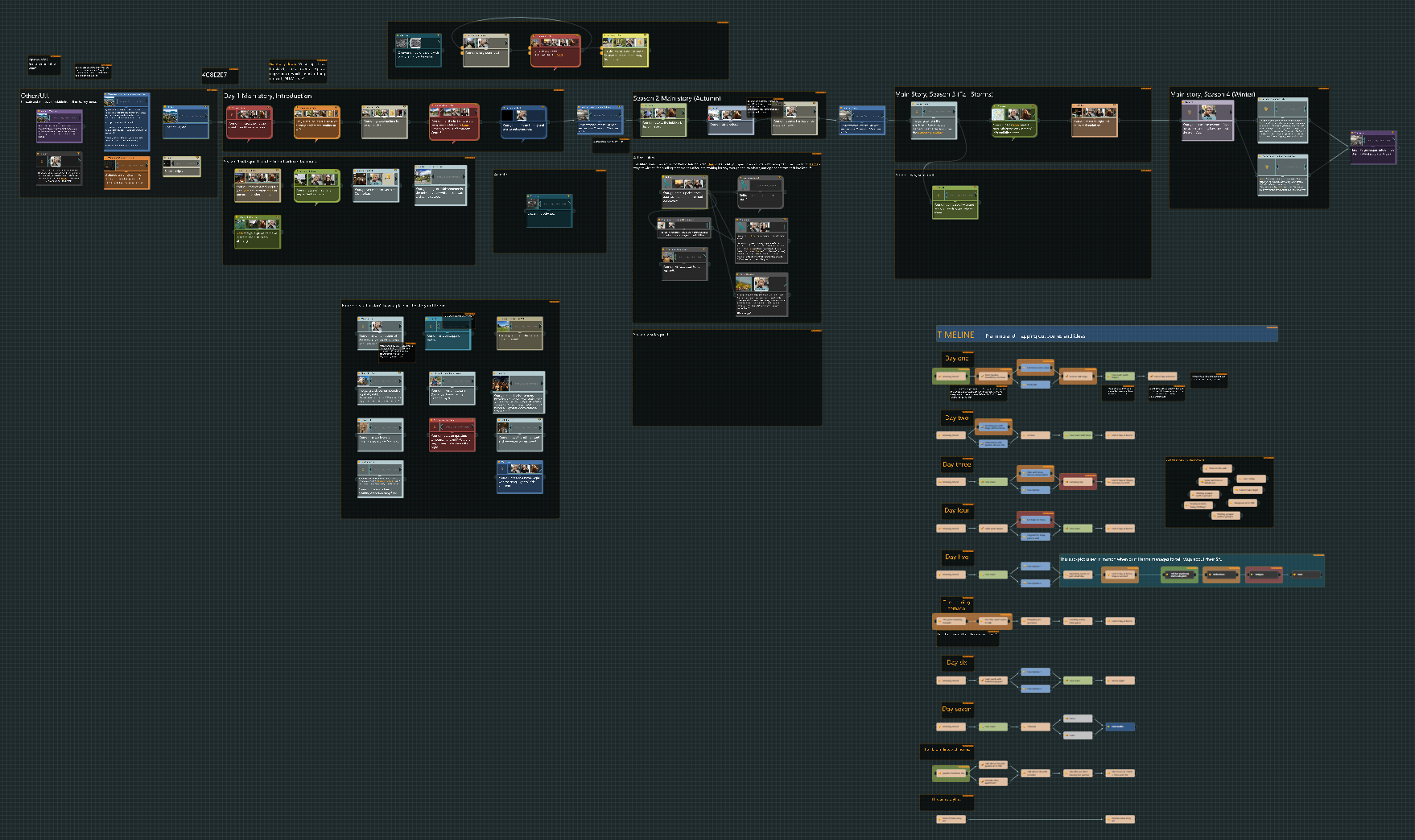SPIRIT Devlog 10: Storyboarding
Welcome to a new devlog, where I’ll discuss and reflect over the pros and cons of using a storyboard when writing a game!

As I’ve said before, I use articy:draft X to write the dialogue and narration for the game, which means each conversation is a flow of ‘speech bubbles’ which are in turn put in nested boxes called flow fragments. This gives me a bird’s eye view of the whole story and makes it trivially easy to make the kind of branching Disco Elysium-esque story I'm writing, and to make changes as neccessary. It also means that I can lay out the broad strokes of the story as a timeline and then work on scenes in whatever order I want. I’ve seen writers describe this as starting out with a skeleton for a story for then to add the meat to the bone, so to say, by actually writing the story. Jason Pargin, author of (among other) the horror novel John Dies at the End, said in a podcast that storyboarding, and planning out a story ahead of time, greatly helped him by letting him spot conflicts and plot holes ahead of time. For example, if a character wound up trapped in a car and needed a gun to escape, Pargin could go back to an earlier part and have that character put a gun in their boot, describing it as a funny scene to keep readers from realizing too easily that it was foreshadowing setting up a later moment in the story. Of course, you can go back and make changes like that when you’re writing a story chapter by chapter, too, but it’s a lot less work when you’re still just looking at the ‘skeleton’ of the story and don’t need to do a lot of lengthy rewriting.
Of course there are downsides to this approach, too. A Pargin also said, the storyboard can end up a straitjacket that just feels like it restricts you, and you have to be willing and able to make changes when needed. When writing out scenes, I’ll sometimes realize that some moment I had planned for later in the game should come earlier, or that some minor side character deserves a larger part in the story. I’ve been suffering from a bit of writer’s block for a while, and I’ve realized recently that it’s been because I’ve been looking too much at the pre-decided timeline and forgotten that it didn’t need to be set in stone and that I could just change it when I needed to. So while the story is largely the same, I’ve detached a lot of scenes from the timeline and put them aside as ideas I may or may not come back to, and for the time being I’ll write out scenes and see where the story and characters take me.
All in all, I couldn’t imagine writing SPIRIT a scene at a time from beginning to end, and I think it’s interesting how there are others in turn who couldn’t imagine writing with a storyboard approach. If anyone has thoughts about what works best for them and why, I’d love to hear them.
Working title SPIRIT
A slice-of-life game about a chaotic university student
| Status | In development |
| Author | IslandWind |
| Genre | Role Playing |
| Tags | english, Female Protagonist, Meaningful Choices, norway, Point & Click, Singleplayer, Slice Of Life, Story Rich |
| Languages | English |
| Accessibility | Color-blind friendly, Subtitles, One button |
More posts
- SPIRIT Devlog 9: Dabbling with background art, and general updatesJul 14, 2025
- SPIRIT Devlog 8: Unity integrationApr 20, 2025
- SPIRIT Devlog 7: Leisure Time and Time SlotsApr 12, 2025
- Interlude -- Radio Silence...Mar 03, 2025
- SPIRIT Devlog 6: Some name and logo brainstormingJan 16, 2025
- SPIRIT Devlog 5: Making the mundane funJan 08, 2025
- SPIRIT Devlog 4: Locations and researchJan 06, 2025
- SPIRIT Devlog 3: Meet the gangNov 11, 2024
Leave a comment
Log in with itch.io to leave a comment.